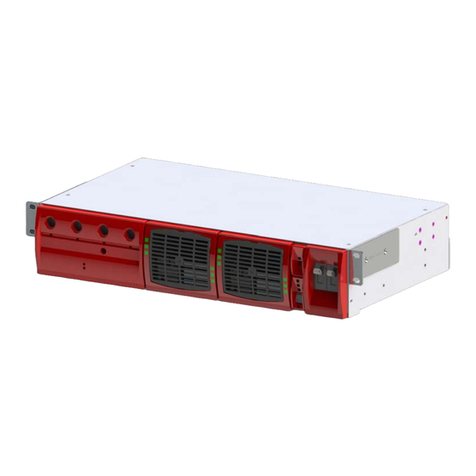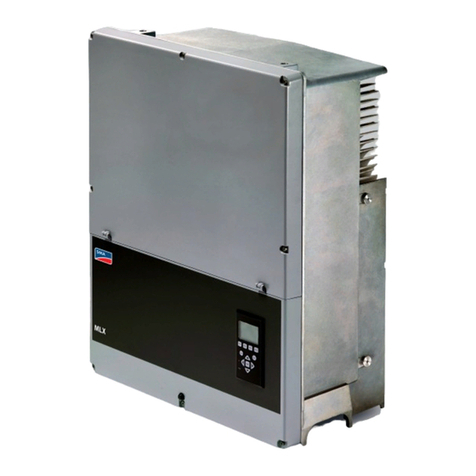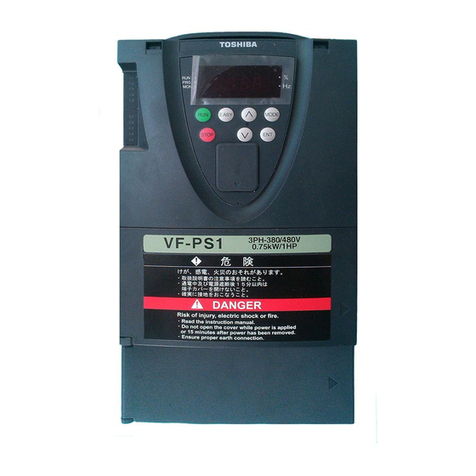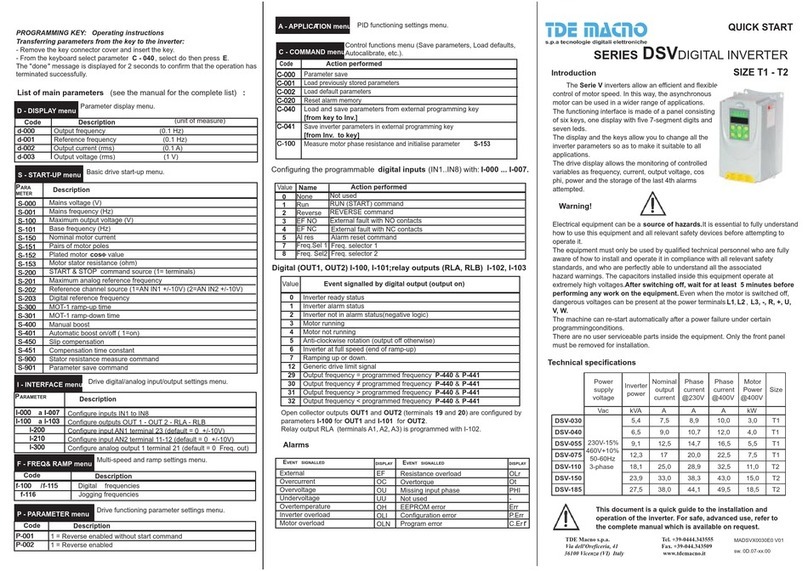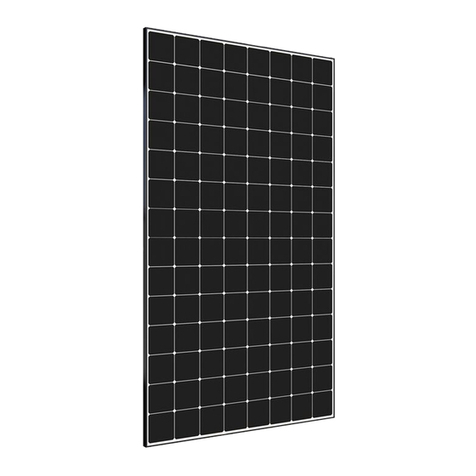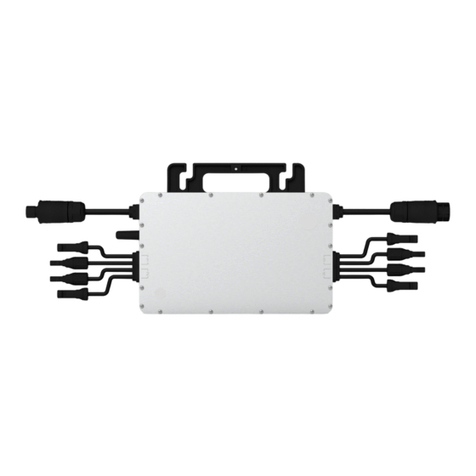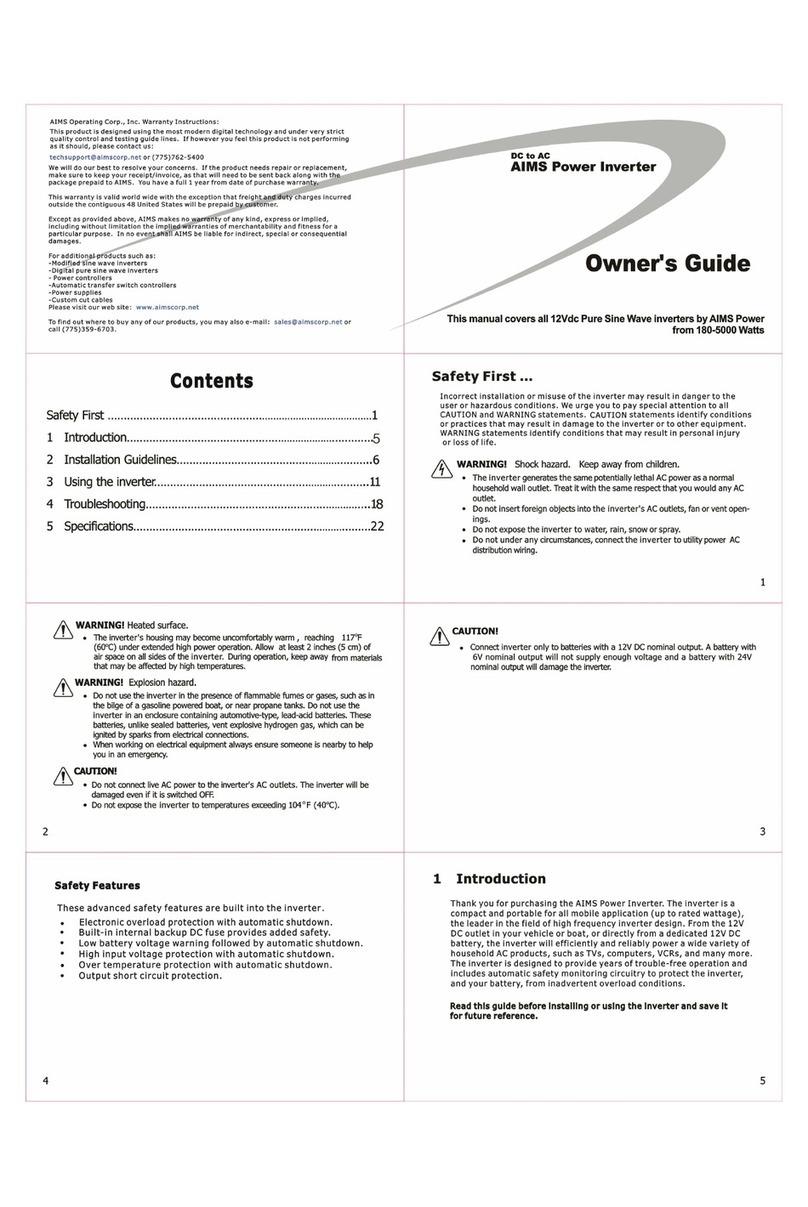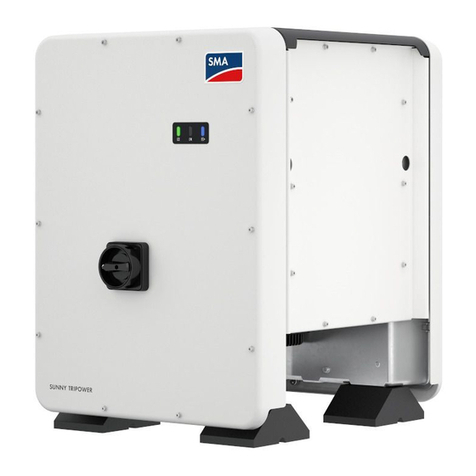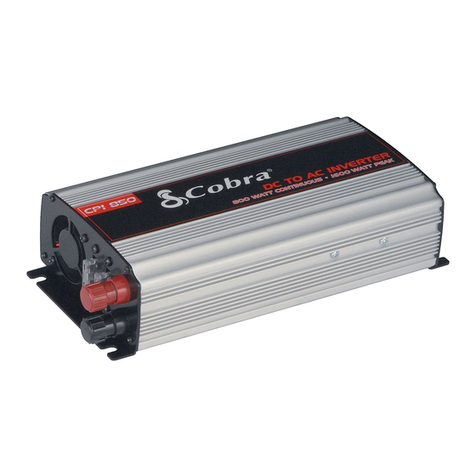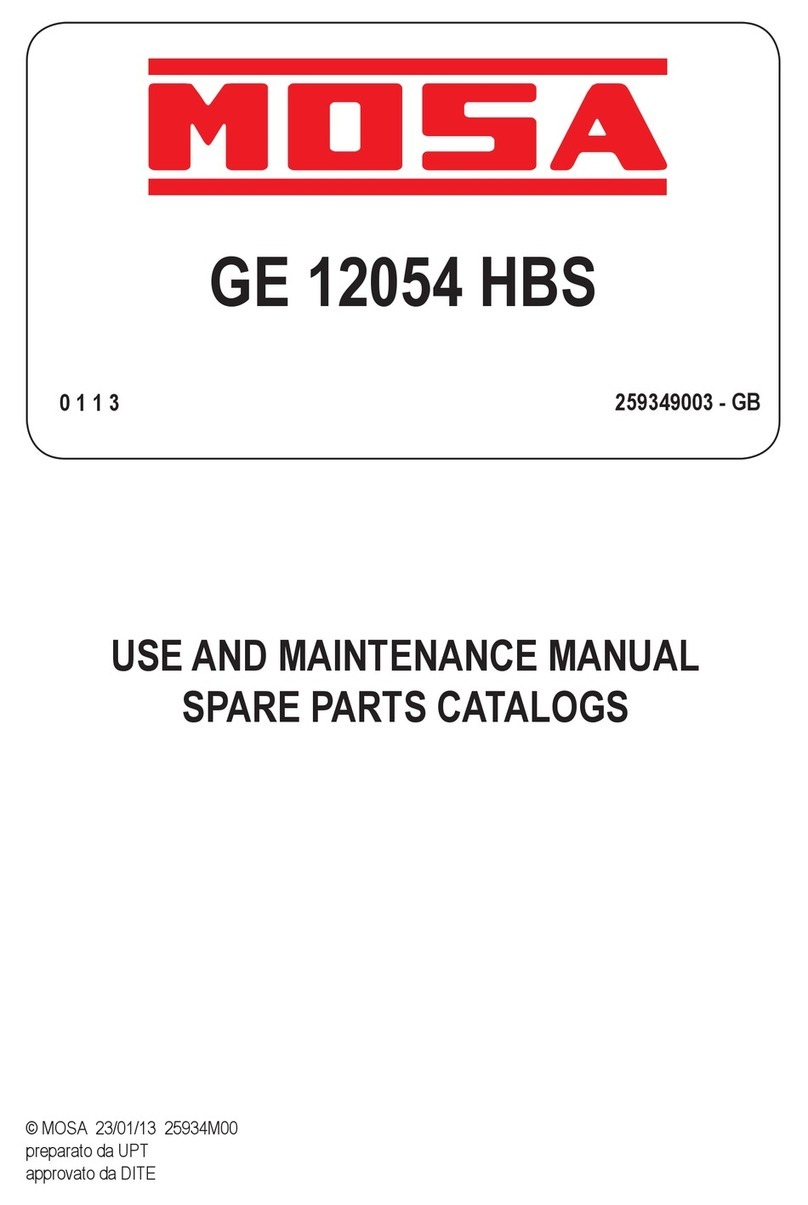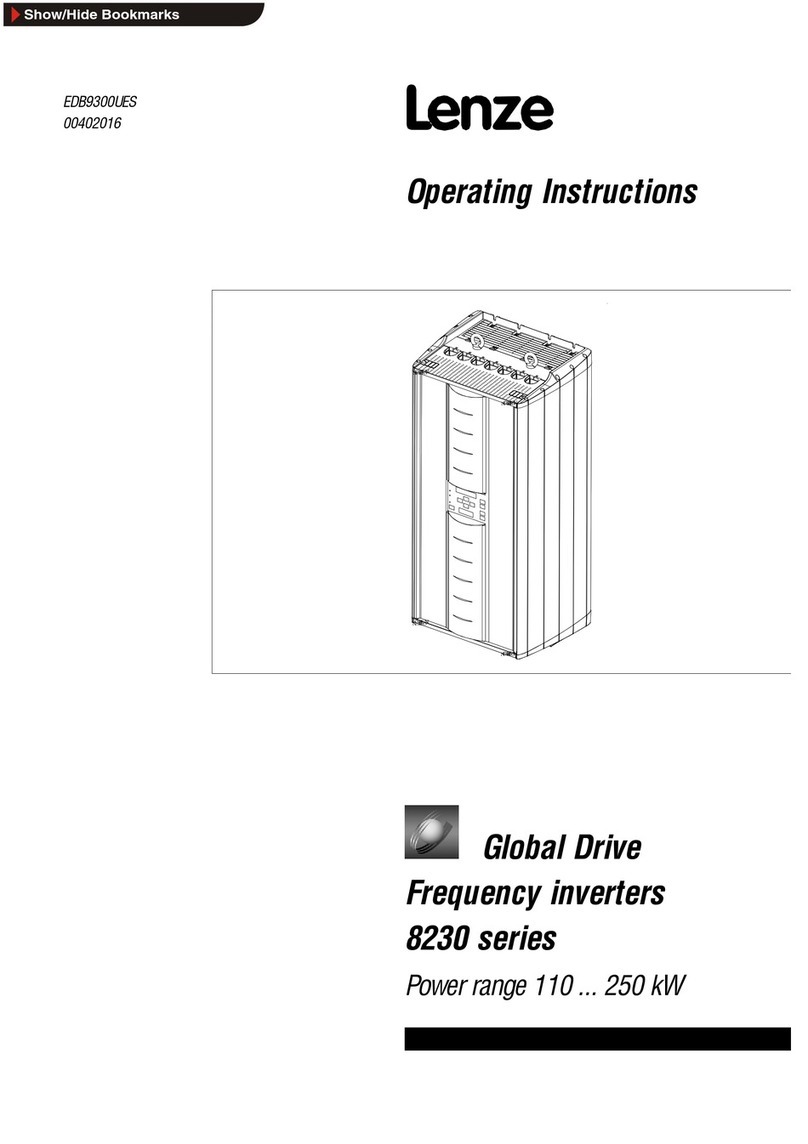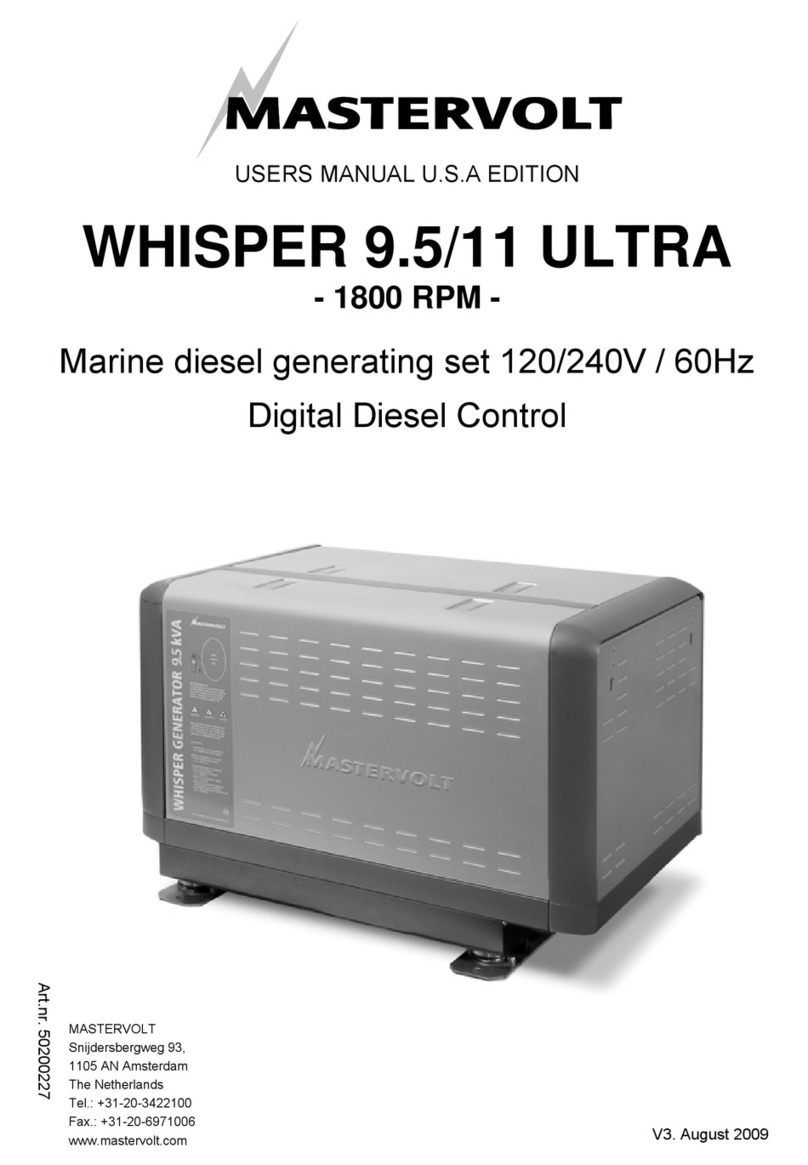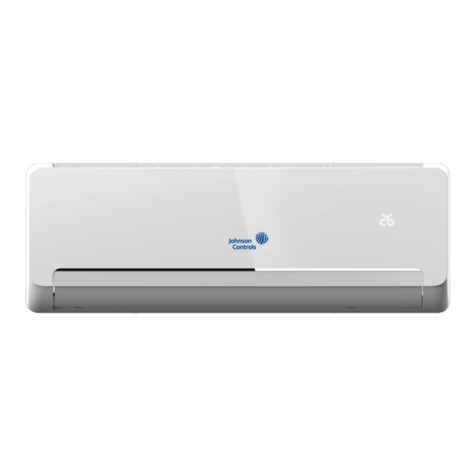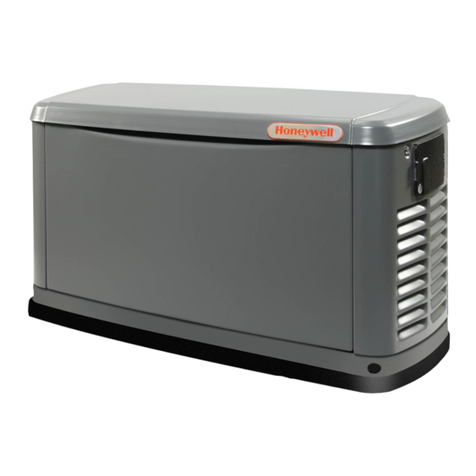CE+T Power BRAVO 10 - 48/120 User manual

Copyright © 2022. Construction electroniques & telecommunications S.A.
All rights reserved. The contents in document are subject to change without notice.
The products presented are protected by several international patents and trademarks.
Address: CE+T S.a, Rue du Charbonnage 12, B 4020 Wandre, Belgium
www.cet-power.com - info@cet-power.com
• DUAL INPUT INVERTER
Commercial Power as default source
• AC BACKUP IN A DC ENVIRONMENT
Leverage your existing DC infrastructure
• ONE STOP SHOP
Wide output power range
• HARSHEST AC INPUT CONDITIONS
Without compromising the quality of the AC output
BEYOND THE INVERTER
THE NEW GENERATION OF POWER CONVERTERS
BRAVO 10 - 48/120
User Manual V1.1
www.cet-power.com
Belgium, China, India, Luxembourg, Malaysia, Russia, United Kingdom, United States, Australia & Germany

2 - Bravo 10 - 48/120 - User manual - v1.1
Table of Contents
1. Introduction to CE+T.............................................................................................................................. 6
2. Abbreviations......................................................................................................................................... 7
3. Warranty and Safety Conditions ............................................................................................................. 8
3.1 Disclaimer................................................................................................................................... 8
3.2 Technical care ............................................................................................................................. 8
3.3 Installation .................................................................................................................................. 9
3.3.1 Handling......................................................................................................................... 9
3.3.2 Surge and transients ...................................................................................................... 10
3.3.3 Other.............................................................................................................................. 10
3.4 Maintenance .............................................................................................................................. 10
3.5 Replacement and Dismantling..................................................................................................... 10
4. ECI Technology....................................................................................................................................... 11
4.1 On-line Mode .............................................................................................................................. 12
4.2 Safe Mode................................................................................................................................... 12
4.3 EPC Mode ................................................................................................................................... 12
4.4 Mix Mode & Walk-in Mode........................................................................................................... 12
5. Building Blocks ...................................................................................................................................... 13
5.1 Bravo 10 - 48/120 ...................................................................................................................... 13
5.1.1 Inverter .......................................................................................................................... 13
5.1.2 Specifications................................................................................................................. 13
5.1.3 Sub-rack....................................................................................................................... 15
5.2 Controller Unit ............................................................................................................................. 15
5.2.1 Inview Slot ..................................................................................................................... 15
5.2.2 Inview S ......................................................................................................................... 17
5.2.3 Inview S - Connections................................................................................................... 17
6. System Installation................................................................................................................................. 18
6.1 Transformer and Generator Sizing ............................................................................................... 18
6.2 Mounting kit for Bravo 10 shelf.................................................................................................... 19
6.3 Cable Routing and Fixation .......................................................................................................... 20
6.3.1 Grounding ...................................................................................................................... 20
6.4 Electrical Installation for Bravo 10 shelf ....................................................................................... 21
6.4.1 Pre requisites ................................................................................................................. 21
6.4.2 Terminations .................................................................................................................. 21
6.4.3 Single phase configuration - 120 Vac ............................................................................. 22
6.4.4 Split phase or Single phase configuration - 240 Vac ....................................................... 23
6.4.5 Three Phase Configuration - 208 Vac.............................................................................. 24
6.4.6 AC Input and Output ....................................................................................................... 25
6.4.7 DC.................................................................................................................................. 26
6.4.8 Bravo 10 System with Inview S - Connections ................................................................ 27
6.4.9 Signalling ....................................................................................................................... 27

3 - Bravo 10 - 48/120 - User manual - v1.1
7. Interface ................................................................................................................................................ 29
7.1 Inverter module........................................................................................................................... 29
7.2 Inview Slot - LCD Display ............................................................................................................ 30
7.2.1 LED indications .............................................................................................................. 30
7.2.2 Menu structure............................................................................................................... 31
7.3 Inview S - LCD interface.............................................................................................................. 32
7.3.1 LED indications .............................................................................................................. 32
7.3.2 Menu structure............................................................................................................... 33
7.4 LCD interface - Terminology ....................................................................................................... 34
7.5 Inview S and Inview Slot - Web Interface ..................................................................................... 35
7.5.1 Login.............................................................................................................................. 36
7.5.2 Interface Areas ............................................................................................................... 36
7.5.3 Web page Controls ......................................................................................................... 38
8. Replacement procedures ....................................................................................................................... 40
8.1 Module - Bravo 10 ...................................................................................................................... 40
8.1.1 Removal......................................................................................................................... 40
8.1.2 Inserting......................................................................................................................... 40
8.2 Controller - Inview Slot ................................................................................................................ 41
8.2.1 Removal......................................................................................................................... 41
8.2.2 Inserting......................................................................................................................... 41
8.3 Controller - Inview S.................................................................................................................... 42
8.3.1 Panel Mounting .............................................................................................................. 42
9. Finishing................................................................................................................................................ 43
10. Commissioning ...................................................................................................................................... 44
10.1 Check list .................................................................................................................................... 45
11. Trouble Shooting and Defective Situations Fixing.................................................................................... 46
11.1 Trouble Shooting ......................................................................................................................... 46
11.2 Defective modules...................................................................................................................... 47
12. Maintenance.......................................................................................................................................... 48
12.1 Access Inview with Laptop .......................................................................................................... 48
12.2 Manual check.............................................................................................................................. 48
12.3 Optional ...................................................................................................................................... 48
13. Service .................................................................................................................................................. 49
14. Appendix................................................................................................................................................ 50
14.1 Bravo 10 - 48/120 - Dimensions ................................................................................................. 50
14.1.1 Module........................................................................................................................... 50
14.1.2 Shelf .............................................................................................................................. 50
14.2 Connections and Wiring Diagrams ............................................................................................... 51
14.2.1 Single phase (L-N).......................................................................................................... 51
14.2.2 Single phase (L-N) - REG................................................................................................ 52
14.2.3 Single shelf - Split phase (L1-L2-N) ............................................................................... 53
14.2.4 Single shelf - Split phase (L1-L2-N) - REG...................................................................... 54

4 - Bravo 10 - 48/120 - User manual - v1.1
14.2.5 Two shelves - Split phase (L1-L2-N)............................................................................... 55
14.2.6 Two shelves - Split phase (L1-L2-N) - REG ..................................................................... 56
14.2.7 Three phase (L1-L2-L3-N).............................................................................................. 57
14.2.8 Three phase (L1-L2-L3-N) - REG.................................................................................... 58

Release Note:
Version Release date
(DD/MM/YYYY) Modified page number Modifications
1.0 07/02/2022 - First release of the manual
1.1 09/09/2022 - Updated the shelf connections
5 - Bravo 10 - 48/120 - User manual - v1.1

1. Introduction to CE+T
CE+T Power designs, manufactures and markets a range of products for industrial operators with mission critical
applications, who are not satisfied with existing AC backup systems performances, and related maintenance costs.
Our product is an innovative AC backup solution that unlike most used UPS’s
•Maximizes the operator’s applications uptime;
•Operates with lowest OPEX;
•Provides best protection to disturbances;
•Optimizes footprint.
Our systems are:
•Modular
•Truly redundant
•Highly efficient
•Maintenance free
•Battery friendly
CE+T power puts 60+ years expertise in power conversion together with worldwide presence to provide customized
solutions and extended service 24/7 - 365 days per year.
Introduction to CE+T
6 - Bravo 10 - 48/120 - User manual - v1.1

2. Abbreviations
AC Alternating current
DC Direct current
DHCP Dynamic Host Configuration Protocol
DSP Digital Signal Processor
ECI Enhanced Conversion Innovation
EPC Enhanced Power Conversion
ESD Electro Static Discharge
ETH Ethernet
HTTP HyperText Transfer Protocol
HTTPS Secure HyperText Transfer Protocol
LAN Local Access Network
MBB Measure Box Battery
MBP Manual By-pass
MET Main Earth Terminal
MIB Management Information Base
N Neutral
NTP Network Time Protocol
NUA Non-Urgent Alarm
PCB Printed Circuit Board
PE Protective Earth (also called Main Protective Conductor)
PWR Power
REG Regular
SNMP Simple Network Management Protocol
TCP/IP Transmission Control Protocol/Internet Protocol
TRS True Redundant Structure
UA Urgent Alarm
USB Universal Serial Bus
Abbreviations
7 - Bravo 10 - 48/120 - User manual - v1.1

3. Warranty and Safety Conditions*
WARNING:
The electronics in the power supply system are designed for an indoor, clean environment.
When installed in a dusty and/or corrosive environment, outdoor or indoor, it is important to:
•Install an appropriate filter on the enclosure door, or on the room’s air conditioning system. Installation of filters
may result in derating of module.
•Keep the enclosure door closed during operation.
•Replace the filters on a regular basis.
Important Safety Instructions and Save These Instructions.
3.1 Disclaimer
•The manufacturer declines all responsibilities if equipment is not installed, used or operated according to the
instructions herein by skilled technicians according to local regulations.
•Warranty does not apply if the product is not installed, used or handled according to the instructions in the
manual. Manufacturer may waive warranty if the system is not installed and commissioned by factory trained
technician.
3.2 Technical care
•This electric equipment can only be repaired or maintained by a “qualified employee” with adequate training.
Even personnel who are in charge of simple repairs or maintenance are required to have knowledge or
experience related to electrical maintenance.
•Please follow the procedures contained in this Manual, and note all the “DANGER”, “WARNING” AND “NOTICE”
marks contained in this Manual. Warning labels must not be removed.
•Qualified employees are trained to recognize and avoid any dangers that might be present when working on or
near exposed electrical parts.
•Qualified employees know how to lock out and tag out machines so the machines will not accidentally be turned
on and injure employees working on them.
•Qualified employees are trained in OSHA and NFPA safety related work practices, and NFPA 70E Arc Flash
Protection and PPE requirements.
•All operators are to be trained to perform the emergency shut-down procedure.
•Never wear metallic objects such as rings, watches, or bracelets during installation, service and maintenance of
the product.
•The maximum operating ambient temperature of the system is 40°C (104°F).
•Insulated tools must be used at all times when working with live systems.
•When handling the system/units pay attention to sharp edges.
•This product is suitable for use in a computer room.
* These instructions are valid for most CE+T Products/Systems. Some points might however not be valid for the product
described in this manual
Warranty and Safety Conditions
8 - Bravo 10 - 48/120 - User manual - v1.1

3.3 Installation
•This product is intended to be installed only in restricted access areas as defined by UL UL60950 and in
accordance with the National Electric Code, ANSI/NFPA 70, or equivalent agencies and in a temperature-
regulated, indoor area that is relatively free of conductive contaminants.
•The Inverter System may contain output over current protection in the form of circuit breakers. In addition to
these circuit breakers, the user must observe the recommended UL listed upstream and downstream circuit
breaker requirements as defined in this manual.
•Please use extreme caution when accessing circuits that may be at hazardous voltages or energy levels.
•The modular inverter rack is a dual input power supply. The complete system shall be wired in a way that both
input and output leads can be de-energized when necessary.
•REG systems and EPC systems that have no AC input wired and connected can be seen as independent power
sources. To comply with local and international safety standards N (output) and PE shall be bonded. The bonded
connection between N (output) and PE must be removed once the AC input is connected.
•AC and DC circuits shall be terminated with no voltage / power applied (de-energized).
•The safety standard IEC/EN62040-1-1 requires that, in the event of an output short circuit, the inverter must
disconnect in 5 seconds maximum. The parameter can be adjusted on Inview; however, if the parameter is set at
a value > 5 seconds, an external protection must be provided so that the short circuit protection operates within
5 seconds. Default setting is 60 seconds.
•The system is designed for installation within an IP20 or IP21 environment. When installed in a dusty or humid
environment, appropriate measures (air filtering) must be taken.
•All illustrations in the manual are for general reference, refer to the technical drawing which is received along
with the system for exact information.
•Environment Conditions:
Storage Conditions: -40 to 70°C
Relative Humidity: 95%, non-condensing
Altitude above sea without de-rating: Less than 1500 m
Greater than 1500 m – de-rating at 0.8% per 100 m
3.3.1 Handling
•The cabinet shall not be lifted using lifting eyes.
•Remove weight from the cabinet by unplugging the inverters. Mark inverters clearly with shelf and position for
correct rebuild. This is especially important in dual or three phase configurations.
•Empty inverter positions should not be left open. Replace with blank module or cover.
Warranty and Safety Conditions
9 - Bravo 10 - 48/120 - User manual - v1.1

3.3.2 Surge and transients
The mains (AC) supply of the modular inverter system shall be equipped with Lightning surge suppression and Transient
voltage surge suppression suitable for the application. Follow manufacturer’s recommendation for installation. Selecting
a device with an alarm relay for function failure is advised.
All sites are considered to have a working lightning surge suppression device in service and installed close enough to
ensure effective protection in accordance with best industry practice.
•Indoor sites Min Class II.
•Outdoor sites Min Class I + Class II or combined Class I+II. The modular inverter system/rack can reach
hazardous leakage currents. Earthing must be carried out prior to energizing the system. Earthing shall be made
according to local regulations.
3.3.3 Other
•Insulation test (Hi-Pot) must not be performed without instructions from the manufacturer. Irreparable damage
may occur.
3.4 Maintenance
•The modular inverter system/rack can reach hazardous leakage currents. Earthing must be carried out prior to
energizing the system. Earthing shall be made according to local regulations.
•Prior to any work conducted on a system/unit make sure that AC input voltage and DC input voltage are
disconnected.
•CAUTION – Risk of electric shock. Inverter modules and shelves contain capacitors for filtering and energy
storage. Prior to accessing the system/modules after power down, wait at least 5 minutes to allow capacitors to
discharge.
•CAUTION –During system operation, the system and module surfaces will be hot. Do not touch, and
contact may cause severe burns. So, please turn off the power and allow it to cool before accessing.
•Some components and terminals carry high voltage during operation. Contact may result in fatal injury.
3.5 Replacement and Dismantling
•ESD Strap must be worn when handling PCB’s and open units.
•CE+T cannot be held responsible for disposal of the Inverter system and therefore the customer must segregate
and dispose of the materials which are potentially harmful to the environment, in accordance with the local
regulations in force in the country of installation.
•If the equipment is dismantled, to dispose of its component products, you must comply with the local regulations
in force in the country of destination and in any case avoid causing any kind of pollution.
To download the latest documentation and software, please visit our website at www.cet-power.com
Warranty and Safety Conditions
10 - Bravo 10 - 48/120 - User manual - v1.1

ECI Technology
11 - Bravo 10 - 48/120 - User manual - v1.1
4. ECI Technology1
Inverter modules carrying the ECI logo and the EPC mark are triple port converters (AC in, DC in, AC out). Sinusoidal
output is converted from Mains or/and DC.
The block diagram below gives an explicit description of the topology and operation.
The module is built around the following sub-converters:
•AC to DC at input
•DC to DC at input
•DC to AC at output
The energy can flow either from the AC source or the DC source under the control of the local DSP controller. Thanks to
internal energy buffering, the output sine wave is constant and disturbance free regardless of the active source.
The ECI works according to True Redundant Structure (TRS) that features decentralized and independent logic, redundant
communication bus and three internal levels of disconnection to isolate a module after internal failure.
This functionality is included in every inverter module. Running them in parallel provides a modular system with, no
single point of failure, always-conditioned output, high system efficiency and 0 ms source transfer time.
1 Information and data given in this chapter is intended to serve as an overview of the ECI Technology. Detailed features and parameters for each individual
module type in the range may differ and should be referred to in the dedicated data sheet.

ECI Technology
12 - Bravo 10 - 48/120 - User manual - v1.1
4.1 On-line Mode
DC is the primary source of supply whilst Mains (AC) works as the secondary source. Switching time between DC input
and AC input is 0 ms (source transfer). The power delivered by the DC source (usually a battery, but possibly any other
type of DC generator) is converted to provide regulated and transient-free power to the load.
Inverter modules carrying the ECI logo together with the REG mark work only with DC input. Sinusoidal output is converted
from DC with the module operating as a traditional inverter. EPC mode is not available with REG modules.
4.2 Safe Mode
Safe mode uses DC as the primary source of supply while Mains (AC) is on standby.
Mains (AC) is normally disconnected through an internal inlet relay and is only connected when down stream clearance
is required.
The transfer between DC and AC results in a typical transfer time of 10 ms.
Typically the safe mode is used in extremely harsh environments such as railways. Under such conditions, it provides
extra isolation against mains-borne disturbances.
4.3 EPC Mode
Mains input (AC) is the primary source whilst DC works as backup.
The ECI is designed to operate on Mains on a permanent basis and to deliver output voltage conditioned with low THD.
The output sine wave is physically independent of whether the source is AC (or) DC. If the Mains is out of tolerance
or goes down, the converter seamlessly switches to DC and the converter operates in “Back-up mode” (Changeover
switching time is 0 ms).
As soon as the Mains returns to its valid range, the EPC mode is automatically resumed.
The EPC mode offers higher efficiency (up to 94% depending on the model) without compromising the purity of the
output sine wave.
4.4 Mix Mode & Walk-in Mode
Under some circumstances the DC and AC sources can be combined. The sequence is defined by a user selectable set
of parameters. Start, control and exit are fully automatic.
The Walk-in mode where the transfer from DC source to AC source is ramped up within a fixed and adjustable period
of time.

Building Blocks
13 - Bravo 10 - 48/120 - User manual - v1.1
5. Building Blocks
5.1 Bravo 10 - 48/120
5.1.1 Inverter
Telecom / Datacom: Input 48 Vdc
120 Vac, 50/60 Hz
Output 120 Vac
Power 1000 VA / 800 W
•The module is a triple port inverter.
•Hot-swappable and hot-pluggable.
•The module operator interface is LEDs showing converter status and output power.
•The module is equipped with a soft start.
•The fan in the module is equipped with alarm and run time meter, and it is field replaceable.
•346 mm (D) x 87 mm (W) x 1U (H).
•1.5 Kg.
5.1.2 Specications
Model Bravo 10 - 48/120
General
Part Number: Module / Shelf T611330201 / T614330000
Cooling / Audible noise Fan forced cooling / <65db @1meter
MTBF 200 000 hrs at 30°C, @80% load (MIL-217-F)
Dielectric strength DC/AC 4300 Vdc
RoHS Compliant
Operating T° / Relative Humidity (RH) non-condensing
Tested according ETS300-019-2-3 Class 3.1
-20°C to 65°C, power de-rating from >50°C to 65°C /
Max RH 95% for 96 hours per year
Storage T° / Relative Humidity (RH) non-condensing Tested according ETS300-019-2-1 Class 1.2
-40°C to 70°C / Max RH 95% for 96 hours per year
Public transport T°/Relative Humidity (RH) non-
condensing
Tested according ETS300-019-2-2 Class 3.1
-40°C to 70°C / Max RH 95% for 96 hours per year
Material (casing) Zinc coated steel
AC Input Data
Nominal voltage (AC) / Current 120 Vac / 7.2 A
Voltage range (AC) 95 - 140 Vac
Brownout < 108 Vac linear decreasing

Power factor / THD > 99% / < 3%
Frequency range (selectable) / synchronization range 60 Hz (range 57 – 63 Hz) / 50 Hz (range 47 – 53 Hz)
DC Input Data
DC voltage: Nominal / range 48 Vdc / (40-60V)*
Nominal current (at 48 Vdc and 800 W output) 18.5 A
Maximum input current (for 15 second) / voltage ripple 22.5 A / < 10 mV RMS
AC Output Data
Efficiency AC to AC (EPC) / DC to AC 95% / >92%
Nominal voltage AC** (Adjustable) 120 V (100 - 130 Vac)
Frequency / frequency accuracy 60 or 50 Hz / 0.03%
Nominal Output power (VA) / (W) 1000 VA / 800 W
Short time overload capacity 125% (15 seconds)
Admissible load power factor Full power rating from 0 inductive to 0 capacitive
Total harmonic distortion (resistive load) < 3%
Load impact recovery time (10% - 90%) ≤ 0.4 ms
Nominal current 8.3 A @ 120 Vac
Crest factor at nominal power 3 : 1 for load P.F. ≤ 0.7
Short circuit clear up capacity 0-20 ms 34 A
Short circuit current after 20 ms 16.5 A for 15 s, 12.5 A from 15 to 60 s, after 60 s -
manual reset is required
AC output voltage stability ±1% from 10% to 100% load
Signaling & Supervision
Display Synoptic LED
Supervision / Part number Inview S Slot - T602004110 and Inview S -
T302004100
Remote on / off On rear terminal of the shelf through Inview
Safety & EMC
Safety UL1778
EMC
EN 61000-4-2 / EN 61000-4-3 / EN 61000-4-4 / EN
61000-4-5 / EN 61000-4-6 / EN 61000-4-8 ETSI EN
300386 v1.9.1 / FCCpart 15 class A
* Permanent 800 W / derating apply based on internal heatsink T°.
** Operation within lower voltage networks leads to de-rating of power performances.
Building Blocks
14 - Bravo 10 - 48/120 - User manual - v1.1

5.1.3 Sub-rack
•The shelf is designed with both Single-phase and Split-phase
•The shelf can be integrated into min 600 mm depth cabinets, Inch/ETSI mounting
•The shelf house max four (4) modules and one (1) Inview Slot
•The extension shelf can accommodate max five (5) modules
•Each shelf has common DC input, AC Input and AC Output
•It is featured with rear protection cover (IP 20)
•Max 5 kVA / 4 kW per shelf
•Dimension: 370 mm (D) x 19” (W) x 1U (H)
•Weight: 2.5 Kg (without modules)
5.2 Controller Unit
5.2.1 Inview Slot
Inview Slot is an advanced monitoring and controller unit for Bravo 10
and Sierra 10 power systems. The product is specially designed in 1U
height to accommodate in the module shelf and reduces the additional
space in the cabinet.
It allows the user to easily access the system information through
inbuilt powerful LCD touch screen graphic display. In addition to the
touch screen display, the user can also access the system information
through the web interface.
The Inview Slot interface provides the user to access the configuration and setup files of the modules in the system.
Inview Slot can monitor up to 32 inverters/converters and featured with:
•LCD touch screen display
•2 Digital Inputs
•2 Output Relay contacts
•Records 5000 events as FIFO
Note: In the Bravo shelf, signalling connections are present at
left first slot. So the Inview Slot controller should be placed only
at the left side of the first slot in the shelf, while you are looking
from the front.
Building Blocks
15 - Bravo 10 - 48/120 - User manual - v1.1

5.2.1.1 Inview Slot - Connections
Inview Slot has an ETH port and USB at the front. Output relays, free potential contacts, Modbus and power connections
are present at the rear side of the Inview Slot connected shelf.
Inview Slot - Front connections
•LAN port is used for network connectivity and user can access the system
information in the Web Interface.
•USB port is used to access the Inview S configuration and setup files.
Inview Slot - Shelf rear connections
•Digital Inputs (D1 and D2): Two potential free Digital Inputs are available for customer connections.
Digital Input 1 is assigned for MBP operation if used.
Digital Input 2 is assigned for Surge Arrester if used.
•Output Relays (K1 and K2): Two output relays are available and can be used for Major and Minor Alarms.
•CAN Modbus (RS485) port is used to establish communication between Inview Slot and MBB. It also provide the
+12 Vdc power to one connected MBB.
•Power: The additional +12 V for Inview Slot and it is from external Auxiliary power supply converter. This power
should not be shared with other devices.
By default, Inview Slot works on 48 Vdc from battery/rectifier source. If DC is not present, it takes +12 V from
external Auxiliary power supply converter (AC to DC).
K1 K2
NO
NO
NC
NC
C
C
Power
PE
D1 D2
CAN
Modbus
(RS485)
Shelf Rear
ETH
USB
Building Blocks
16 - Bravo 10 - 48/120 - User manual - v1.1

5.2.2 Inview S
Inview S is an advanced monitoring and controller unit for Bravo 25, Bravo 10, Sierra 25, and Sierra 10 power systems.
It allows the user to easily access the system information through inbuilt powerful touch screen graphic display. In
addition to the touch screen display, the user can also access the system information through the web interface and
SNMP protocol.
The Inview S interface provides the user to access the configuration and setup files of the modules in the system. Also,
it is a controller for DC regulation.
Inview S can monitor up to 32 inverters/converters and featured with:
•LCD touch screen display
•2 Digital Inputs
•2 Output Relay contacts
•Records 5000 events as FIFO
5.2.3 Inview S - Connections
Inview S is composed of multiple network ports and inbuilt free potential contacts.
C
-
C
+
-
NC
+Digital Input 2
Digital Input 1
Output Relay 2
Output Relay 1
Power 12 Vdc
NC
PE
NO
-
NO
+
CAN
iso RS485
ETH
USB
CE+T COM
•CE+T COM port is dedicated to establish connection between Inview S and Bravo 10 - shelf.
•ETH ( ) port is used for network connectivity and user can access the system information in the Web
Interface.
•CAN / iso RS485 port is used to establish communication between Inview S and MBB.
•USB port is used to access the Inview S configuration and setup files.
•Digital Inputs (D1 and D2): Two potential free Digital Inputs are available for customer connections.
Digital Input 1 is assigned for MBP operation if used.
Digital Input 2 is assigned for Surge Arrester if used.
•Output Relays (K1 and K2): Two output relays are available and can be used for Major and Minor Alarms.
•Power: The unregulated separate +12 V power supply is required for powering Inview S and this power should
not be shared with other devices. (CET can provide Auxiliary Power Supply converter and the part number is
T602004120).
Building Blocks
17 - Bravo 10 - 48/120 - User manual - v1.1

6. System Installation
Input and output protections
When installing Bravo 10 inverter systems, UL489 listed AC upstream (input) and downstream (output) circuit breakers
are required. Refer section 6.4.6, page 25.
AC Input and Output
•Branch circuit protection breaker should be provided in upstream switchgear regardless of any protective device
already installed at the input of the Bravo 10 system.
•An appropriate branch protection should be provided between the Bravo 10 System and the load.
DC
•An appropriate DC disconnection device should be installed at Input.
Output distribution should be structured to guarantee tripping segregation.Contact the manufacturer for recommendations
and calculation methodology.
•Refer to section 6.4.6, page 25 for sizing protections and connecting cables. All cables must be copper rated
for min 90°C (194°F).
•All cables must be C-UL-US or CSA Listed cables.
•All cables lugs must be C-UL-US or CSA listed. They must be sized according to the rated current of the
converter system and to the customer terminal connection.
•Wire all positions for future expansion.
•Input AC / Output AC / Input DC / Signal cables shall be separated.
•Cable crossings shall be done in 90 deg angles.
•Empty converter positions shall be covered with blank module.
•Bravo 10 system is designed for temperature controlled (40°C / 104°F max) and clean environments. The
presence of airborne particles such as urban dust, sand, metallic dust, and corrosive vapours is forbidden. Install
only in a relatively free of conductive contaminants environment.
6.1 Transformer and Generator Sizing
The inverter is capable of operating at 125% of rated capacity for 15 seconds.
•Transformers supplying AC to the converter should be sized at a minimum of 1.25 times the kVA rating of the
converter to meet this requirement.
•Generators supplying emergency AC to the building and to the converter should be sized at a minimum of two
times the kVA rating of the converter.
System Installation
18 - Bravo 10 - 48/120 - User manual - v1.1

6.2 Mounting kit for Bravo 10 shelf
Bravo 10 shelf mounting kit is designed to fix in different depth cabinets. The part number is T319000001 and has the
following accessories in the kit.
4 x Fixing brackets 2 x Sliders 8 x (M5 Philips head screws and nuts)
2 x (M6 Hex socket screws, cage nuts and nuts) 6 x (M6 Philips head screws and cage nuts)
Perform the following steps to install the shelf mounting kit in the cabinet:
1. Adjust the slider and brackets depending upon the cabinet depth, and fix it with M5 screws and nuts. If holes are
available in the kit, fix it with the additional screws and nuts to increase the kit strength.
2. Place the assembled mounting kit in the cabinet and fix it on the front side at any one hole with the M6 Hex
socket screw and cage nut. (Note: Tighten the Hex socket screw with Allen key till it touches behind the metal
part.)
3. Fix the other end of the mounting kit at cabinet rear using the M6 Philips head screw and cage nut.
4. Similarly, assemble another mounting kit and fix it on another side of the cabinet.
Adjust the slider and brackets Fix it with screws and nuts Fix the assembled kit in the cabinet
Screw, mounng kit & cage nut arrangement
Mounting kit
Cage nut
Hex socket
Screw
Cabinet frame
Tighten the screw ll it touches the metal part
5. Place the shelf on the mounting kit and fix it with a M6 nut in the already installed hex socket screw used for the
mounting kit.
6. Fix the other hole of the shelf in the cabinet using M6 Philips head screw and cage nut.
7. Similarly, fix the other side of the shelf and insert modules in the corresponding slot.
Place the shelf in the cabinet and x it Insert the modules in the shelf
Philips head screw Hex socket screw
Nut
System Installation
19 - Bravo 10 - 48/120 - User manual - v1.1

6.3 Cable Routing and Fixation
Terminations are present at rear side of the shelf and it is protected with IP 20 metal cover.
Perform the following steps to connect power and signal cables:
1. Remove the rear protection cover by unscrewing four screws (Two at the rear and one on both sides).
2. Break the required knockouts and insert the grommets (1 x large, 2 x small, and 1-meter strip) for cable
protection, and it is shipped along with the shelf. (Warning: Take special attention while breaking knockouts to
avoid damaging the connectors, terminals and PCB in the shelf.)
AC IN and OUT cables entry – Right end of the shelf (2 - Knockouts)
DC cables entry – Left end of the shelf (2 - Knockouts)
Knockouts are also available at top and bottom of the protection cover.
Note: Refer to section 14.1, page 50, to know more about knockout dimensions.
3. Connect the power and signal cables with supplied screws, refer section 6.4.2, page 21 for terminals
position.
4. Close the rear protection cover and tighten with four screws.
Cable entries
DC +
DC -
AC OUT
AC IN
Signal
4 x Screws
Remove four screws Remove protection cover
6.3.1 Grounding
“PE Chassis Ground”
PE Chassis ground should be wired to MET (Main Earth Terminal) or distributed earth bar connected to MET, according
to local regulations. The wire size should be 4 AWG.
It is mandatory to use only C-UL-US or CSA listed Right angle ring terminal Cable Lugs (Burndy: YAV4CRS). Fix the lug
with 1/4-20 inch Nut with torque 5.7 to 8.3 ft-lb.
T
Z
L C
K
16-14
WIRE RANGE
N
Y
L : 1.06
Y : 0.70
Z : 0.28
N : 0.27
T : 0.09
All dimensions are in inch
K : 0.28
C : 0.56
System Installation
20 - Bravo 10 - 48/120 - User manual - v1.1
Table of contents
Other CE+T Power Inverter manuals

CE+T Power
CE+T Power BRAVO 25 User manual
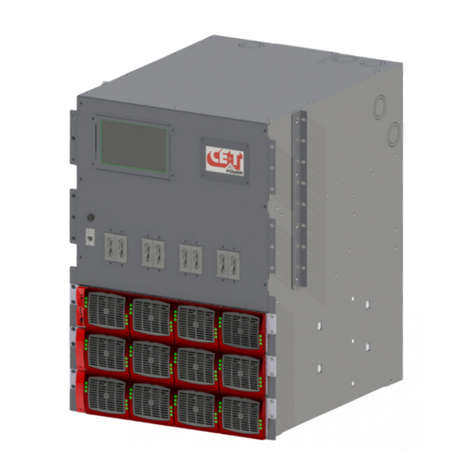
CE+T Power
CE+T Power RBS Series User manual

CE+T Power
CE+T Power Bravo 10 - 48/230 User manual
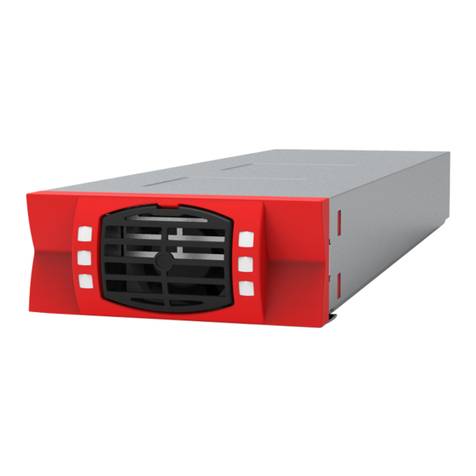
CE+T Power
CE+T Power TSI NOVA User manual

CE+T Power
CE+T Power e-one 10 - 48/230 User manual
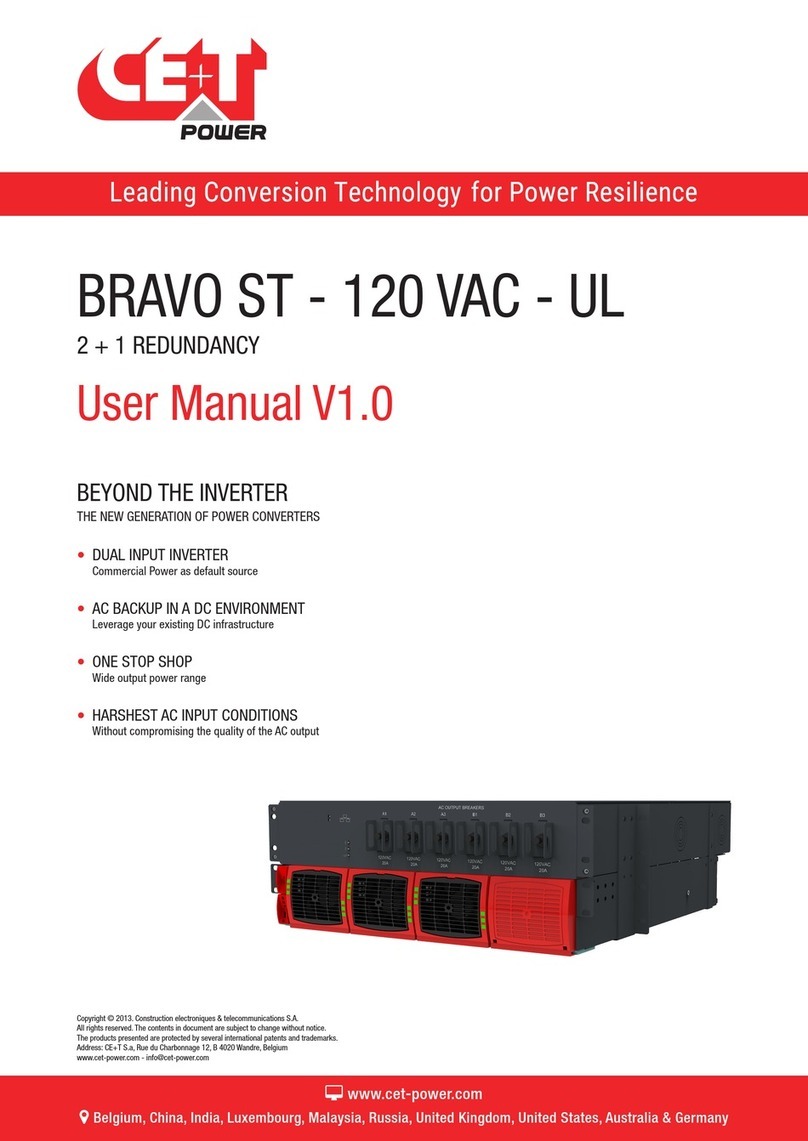
CE+T Power
CE+T Power BRAVO ST-120 VAC-UL User manual
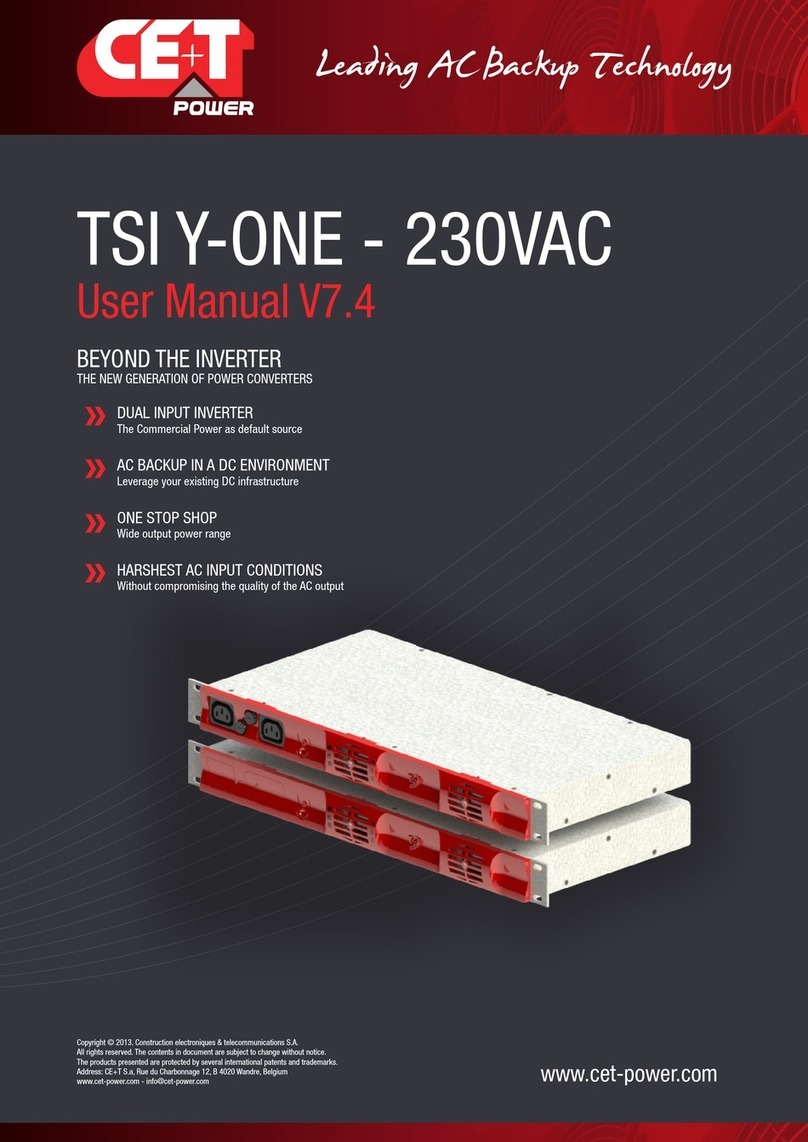
CE+T Power
CE+T Power TSI Y-ONE Series User manual
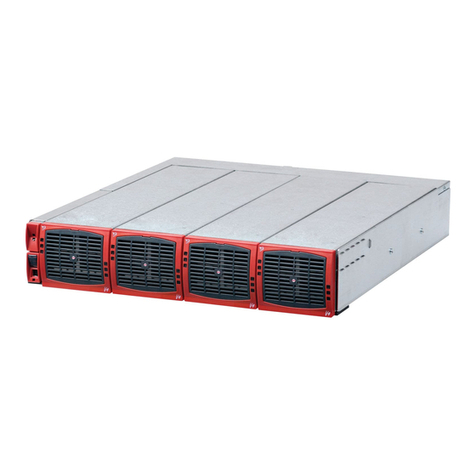
CE+T Power
CE+T Power TSI MEDIA User manual
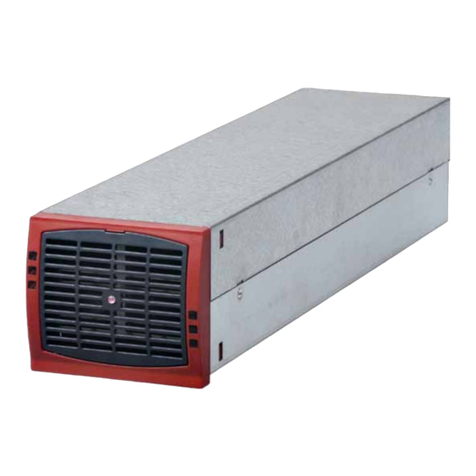
CE+T Power
CE+T Power TSI Bravo User manual
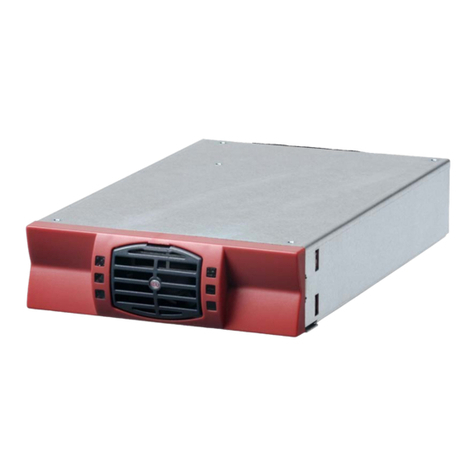
CE+T Power
CE+T Power TSI VEDA User manual
